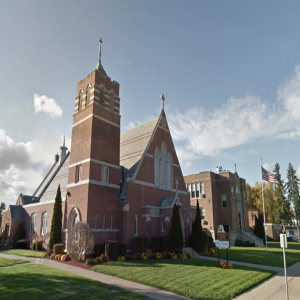
A few years ago, a woman was standing outside a church in New York City, hesitating about whether to go inside. Her name was Elaine Pagels, and she was a brilliant historian at Princeton University. Although her specialty was the history of ancient Christianity, it had been years since she herself had gone to church.
Now she was in a desperate frame of mind. Her young son lay in a hospital a few blocks away, just diagnosed with an incurable disease. As she listened to the music drift out of the church and heard the liturgy begin, she found herself drawn in. Writing about this moment in her book Beyond Belief, Pagels said that she was looking for a place to take her fears and grief. Inside the church, she thought, were people who knew “how to deal with death.”
Is that right? Are Christians people who know how to deal with death? Not in the sense that we have knockdown answers to the questions and the terrors that it brings. When the diagnosis comes back with our name on it when brutal injustice is done to us or our loved ones, our world is shattered like anyone else’s.
What we have, instead of answers, is Jesus Christ. In Him, God was pleased to dwell, and in Him, God Himself entered into the fear and the grief, the questions and the terrors of this life.
This is the amazing, fearful, and saving story that is our Gospel today. Fearful, for this reason: The anointed one of God, God’s beloved Son, did not escape suffering or death, did not escape injustice. As Isaiah says, He was “afflicted,” “pierced,” and “crushed.”
But this fearful story is the saving Word to us because of who Christ was and is. Because it was God, the Creator of the universe, who entered completely into this man’s journey toward death, entered even into the silence of the tomb, then our journey down that same road has to be seen in a new way. Our journey to Good Friday, and through all the Good Friday experiences along the way, is not a journey away from God or a journey away from life but part of the mysterious journey back to God.
This is why Jesus can say on the Cross, in His final moment, “It is finished,” and mean by that not “It is over” but “It is accomplished.” What has been accomplished? The fragile gift of life has been handed back to God.
The other Gospel accounts tell us that Jesus used His moments on the Cross to offer forgiveness to one of the men being executed beside Him and to pray for those who were putting Him to death. The Gospel of John, though, reports that after saying, “It is finished,” Jesus “gave up His spirit.” The Greek words for “gave up His spirit” are sometimes translated as “He delivered His spirit” or “He handed over” His spirit. That reading would be consistent with what Jesus is doing in the Gospel of John. He is trustingly handing His life over—not to Pilate or to Caesar but back to God.
Jesus hands His life back to God in a particular way: by first handing it on to others. In the last moments on the Cross, He hands Mary, His mother, and one of the disciples over to each other, creating a new family. He takes their grief and despair and turns it into the occasion for new relationships and new responsibilities.
This act of handing our life back to God is not something we do only at the end of life. It is in the nature of everyday existence. We are always expending ourselves, exerting ourselves. The question is whether we are exerting ourselves only to preserve our life and shore up what we have and the illusions of our immortality. Or, trusting that God is with us in this fleeting life, are we handing on life to others?
The One who went to the Cross, who embraces our life from womb to tomb, calls us to follow Him into the dark uncertainties of this world. In fellowship with Jesus Christ, we can live in a way that hands life back to God by handing it on to others. And then we wait.+
More Episodes
 2024-11-05
2024-11-05
 13
13
 2024-11-04
2024-11-04
 9
9
 2024-11-03
2024-11-03
 2
2
 2024-11-01
2024-11-01
 11
11
 2024-10-29
2024-10-29
 3
3
 2024-10-27
2024-10-27
 11
11
 2024-10-25
2024-10-25
 10
10
 2024-10-24
2024-10-24
 10
10
 2024-10-22
2024-10-22
 10
10
 2024-10-21
2024-10-21
 6
6
 2024-10-20
2024-10-20
 16
16
 2024-10-18
2024-10-18
 6
6
Create your
podcast in
minutes
- Full-featured podcast site
- Unlimited storage and bandwidth
- Comprehensive podcast stats
- Distribute to Apple Podcasts, Spotify, and more
- Make money with your podcast
It is Free
- Privacy Policy
- Cookie Policy
- Terms of Use
- Consent Preferences
- Copyright © 2015-2024 Podbean.com





